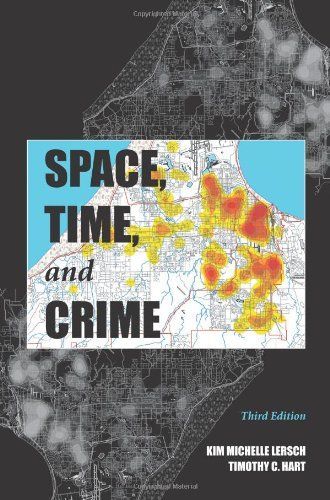
Space, Time, and Crime
Interest in the spatial distribution of crime and criminals has experienced a virtual explosion over the past several years. In Space, Time, and Crime, the authors provide an overview of the various theoretical explanations, crime control policies, and practical investigative tools used to identify high crime places, spaces, and times. Throughout the text, Lersch and Hart strive to provide a highly readable, informative discussion of the important issues surrounding the geography of crime, providing real world examples as well as illustrations from previously published research.Space, Time, and Crime provides a basic overview of the more popular theories that have been used to explain the concentration of crime in certain places and times. Each theory is carefully and clearly developed from its historical roots to contemporary applications, with solid research cited throughout the discussions. The reader is then moved from theory into practice, where a summary and critique of a number of various theoretically-driven practical policy applications are presented. The basic elements of crime analysis and crime mapping, both very popular crime fighting tools for police agencies and place managers, are presented. Finally, the book closes with a strong Marxist-based critique of the various theories, policies, and tools, leaving the reader with some troubling questions to ponder.This book includes sections on a number of the more exciting and controversial issues facing criminal justice today, including community policing, problem oriented policing, crime prevention through environmental design (CPTED), situational crime prevention, the COMPSTAT model for managing police resources, identifying and controlling hot spots, crime displacement and other ethical issues surrounding crime prevention, and environmental justice.The third edition updates and expands the second edition.